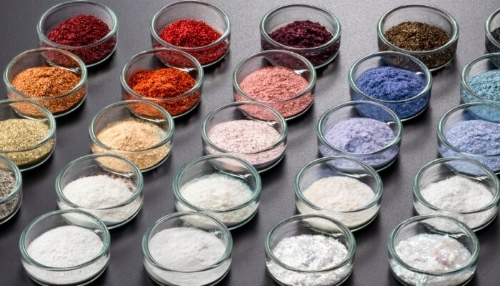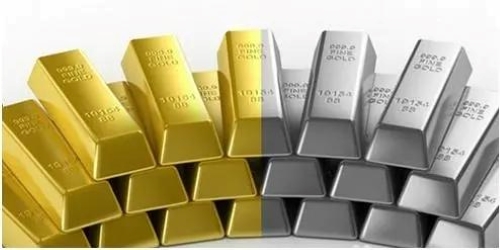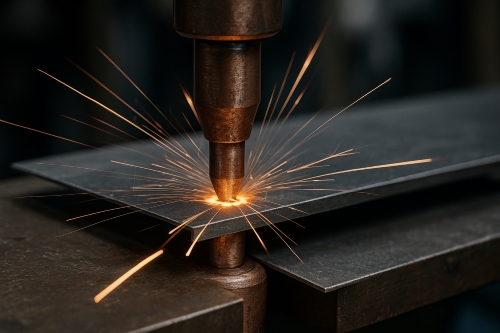Precious Metal Lists: An Overview
What are Precious Metals?
Precious metals are rare, naturally occurring metallic elements that hold significant economic value. This group comprises Palladium, Platinum, Gold, Silver, Rhodium, Iridium and other Platinum Group Metals (PGMs). They are used in industry because of their measured physical and chemical properties, such as resistance to corrosion, high electrical conductivity and catalytic capability.
Palladium and Platinum, members of the Platinum Group Metals (PGM), are used due to their catalytic properties, corrosion resistance and conductivity. They are applied in the automotive, electronics and jewellery industries.

Demand for Precious Metals
The demand for Palladium and Platinum is determined by their physical properties and industrial applications:
- Palladium: More than 80 % of the worldwide supply of Palladium is used in catalytic converters that reduce vehicle emissions. Consequently, stricter environmental regulations have resulted in Palladium prices increasing to peaks exceeding 2 500 $ per ounce.
- Platinum: Platinum is used in catalytic converters and has additional industrial applications. It is applied in fuel cells, medical devices and the production of hydrogen. Platinum prices have fluctuated, typically averaging between 900 and 1 200 $ per ounce.
- Investment Appeal: Both metals are considered valuable investment assets and are used as a hedge against economic uncertainty.

Recycling of Precious Metals
Recycling is important to maintain the supply of Palladium and Platinum, given that mining is both costly and environmentally demanding. The principal sources for recycled PGMs are:
- Automotive Catalytic Converters: Spent catalytic converters are the major source of recycled Palladium and Platinum. A single converter can contain between 2 and 7 grams of these metals.
- Electronics: Hard drives, circuit boards and industrial equipment contain small amounts of Palladium and Platinum that can be recovered.
- Jewellery and Industrial Waste: Old jewellery and manufacturing scrap provide additional sources of recycled material, thereby reducing reliance on mined resources.
Types of Precious Metals and Their Uses
Precious metals are rare, naturally occurring metallic elements with considerable economic value. Besides their use in jewellery and investment, they serve important industrial applications due to measured properties such as conductivity, corrosion resistance and catalytic activity.
1. Gold (Au)
- Electronics: Gold is used in connectors, circuit boards and microprocessors because of its excellent conductivity and resistance to oxidation.
- Aerospace: Gold is used in components for spacecraft and satellites as it withstands extreme conditions.
- Medical Devices: Gold is applied in pacemakers, dental fillings and diagnostic instruments.
2. Silver (Ag)
- Electronics: Silver is used in conductors, switches and batteries owing to its high electrical conductivity.
- Photovoltaics: It is used in solar cells for efficient energy conversion.
- Medical Applications: Silver is applied in antibacterial coatings for surgical instruments, wound dressings and catheters.
3. Platinum (Pt)
- Catalytic Converters: Platinum is used in converters that reduce harmful emissions.
- Medical Industry: It is used in pacemakers, dental implants and certain chemotherapeutic formulations.
- Electronics: Platinum is applied in hard drives and thermocouples due to its stability at high temperatures.
4. Palladium (Pd)
- Automotive Industry: Palladium is a key component in catalytic converters that reduce emissions.
- Electronics: It is used in multilayer ceramic capacitors (MLCCs) for smartphones and laptops, as described in this reference.
- Hydrogen Storage: Palladium is applied in fuel cell technology to store hydrogen for clean energy applications.
5. Rhodium (Rh)
- Catalysis: Rhodium is used in catalytic converters to reduce nitrogen oxide emissions.
- Glass Manufacturing: It is applied in the production of high-quality optical and industrial glass.
- Electronics: Rhodium is used in electrical contacts owing to its resistance to corrosion.
6. Iridium (Ir)
- Aerospace: Iridium is used in spark plugs and components for aircraft because of its durability.
- Medical Applications: It is applied in equipment for cancer treatment and in stents.
- Electronics: High-performance electrodes may contain Iridium.
7. Ruthenium (Ru)
- Electronics: Ruthenium is used in resistors and computer hard drives.
- Catalysis: It is applied in chemical processes, including the synthesis of ammonia.
- Wear-resistant Coatings: Ruthenium is used in electrical contacts and chip resistors.
8. Osmium (Os)
- Medical and Industrial Alloys: Osmium is used in pacemakers, fountain pens and specialised cutting tools.
- Chemical Industry: It is applied as a catalyst in specific organic synthesis reactions.
- The table below summarises the industrial applications of precious metals:
Summary Table: Industrial Applications of Precious Metals
|
Precious Metal |
Industrial Applications |
|
Gold (Au) |
Electronics (connectors, circuit boards); Aerospace (components for spacecraft); Medical Devices (pacemakers, dental fillings, diagnostic instruments) |
|
Silver (Ag) |
Electronics (conductors, switches, batteries); Photovoltaics (solar cells); Medical Applications (antibacterial coatings, surgical instruments, wound dressings, catheters) |
|
Catalytic Converters; Medical Industry (pacemakers, dental implants, chemotherapeutic formulations); Electronics (hard drives, thermocouples) |
|
|
Automotive Industry (catalytic converters); Electronics (MLCCs for smartphones, laptops); Hydrogen Storage (fuel cell technology) |
|
|
Rhodium (Rh) |
Catalysis (catalytic converters for nitrogen oxide reduction); Glass Manufacturing (optical/industrial glass); Electronics (electrical contacts) |
|
Iridium (Ir) |
Aerospace (spark plugs, aircraft components); Medical Applications (cancer treatment devices, stents); Electronics (high-performance electrodes) |
|
Ruthenium (Ru) |
Electronics (resistors, computer hard drives); Catalysis (ammonia synthesis); Wear-resistant Coatings (electrical contacts, chip resistors) |
|
Osmium (Os) |
Medical/Industrial Alloys (pacemakers, fountain pens, cutting tools); Chemical Industry (catalysis in organic synthesis) |
Conclusion
Precious metals perform significant functions beyond traditional roles in jewellery and as investment assets. Their measured conductivity, corrosion resistance and catalytic properties render them essential in the fields of electronics, automotive, aerospace and medicine. Given that demand for high-performance materials is increasing, these metals will remain critical for both industrial and scientific applications, thereby influencing the future development of modern technology.
For further information, please visit Stanford Advanced Materials (SAM).

 Bars
Bars
 Beads & Spheres
Beads & Spheres
 Bolts & Nuts
Bolts & Nuts
 Crucibles
Crucibles
 Discs
Discs
 Fibers & Fabrics
Fibers & Fabrics
 Films
Films
 Flake
Flake
 Foams
Foams
 Foil
Foil
 Granules
Granules
 Honeycombs
Honeycombs
 Ink
Ink
 Laminate
Laminate
 Lumps
Lumps
 Meshes
Meshes
 Metallised Film
Metallised Film
 Plate
Plate
 Powders
Powders
 Rod
Rod
 Sheets
Sheets
 Single Crystals
Single Crystals
 Sputtering Target
Sputtering Target
 Tubes
Tubes
 Washer
Washer
 Wires
Wires
 Converters & Calculators
Converters & Calculators
 Write for Us
Write for Us

 Chin Trento
Chin Trento



